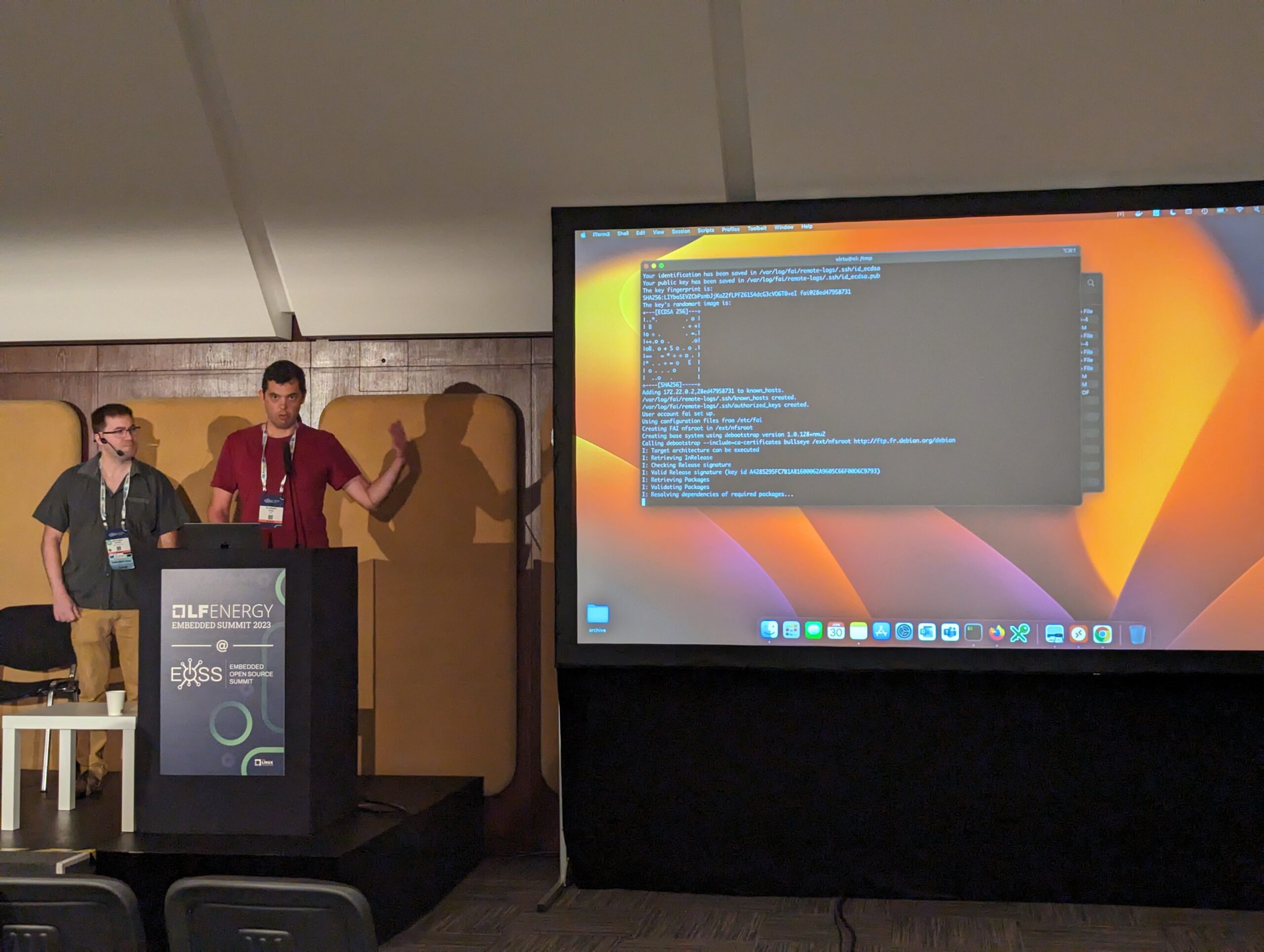LF Energy Embedded Summit Recap: Streamlining Low Latency Virtual Machines with SEAPATH: Ensuring Redundancy and Reliability
At LF Energy Embedded Summit 2023, Mathieu Dupré from Savoir-faire Linux and Florent Carli from RTE presented a session on “Using SEAPATH to Deploy Low Latency Virtual Machines with Redundancy” (video follows below). Their talk revolved around the efficient utilization of SEAPATH (Software Enabled Automation Platform and Artifacts THerein) to deploy virtual machines (VMs) with low latency, ensuring redundancy and reliability. Let’s dive into the key points of their presentation.
Introducing SEAPATH and its Architecture
SEAPATH is a powerful configuration project aimed at building virtualization platforms for latency-sensitive applications. It leverages KVM virtualization running on Real-Time Linux and Open vSwitch for seamless networking. The architecture encompasses clusters with a minimum of three nodes, accommodating various technologies for VM deployment and management.
Deploying VMs with Redundancy
The focus of the presentation was on deploying low latency VMs with redundancy, ensuring continuous operation even in the face of failures. The cluster setup involves at least three nodes, and each episode within the cluster may contain multiple VMs. This redundancy allows for VMs to migrate from one host to another seamlessly, ensuring fault tolerance and optimal resource utilization.
Operating on Debian and Yocto Linux Distributions
SEAPATH provides flexibility by supporting both Debian and Yocto Linux distributions. The deployment process includes Ansible Playbooks to set up and configure the machines, easing the installation and management process. The presenters showcased how it is possible to run SEAPATH on top of Debian and Yocto, making it a versatile solution for different infrastructures.
SEAPATH and Compliance
The power of SEAPATH extends beyond just deployment and management. The platform can be utilized for compliance purposes as well. Ansible’s capabilities allow for easy monitoring and change detection, ensuring that any modifications made to the system are well-documented and adherent to compliance standards.
SEAPATH’s Upgrade Mechanism
The presentation touched upon SEAPATH’s upgrade mechanism, highlighting the use of LVM (Logical Volume Manager) snapshots to ensure safe and seamless upgrades. With a reliance on the Debian operating system, SEAPATH leverages well-established upgrade procedures, enabling smooth transitions without compromising system stability.
As the world embraces digital transformation, solutions like SEAPATH play a vital role in ensuring reliable and efficient virtualization infrastructures that meet the demands of latency-sensitive applications in today’s dynamic energy landscape.
